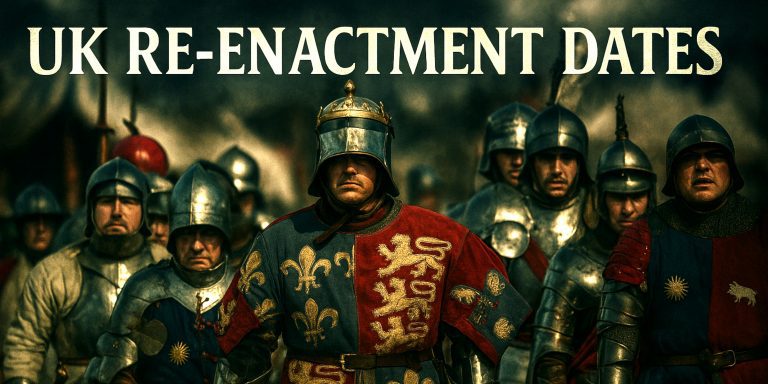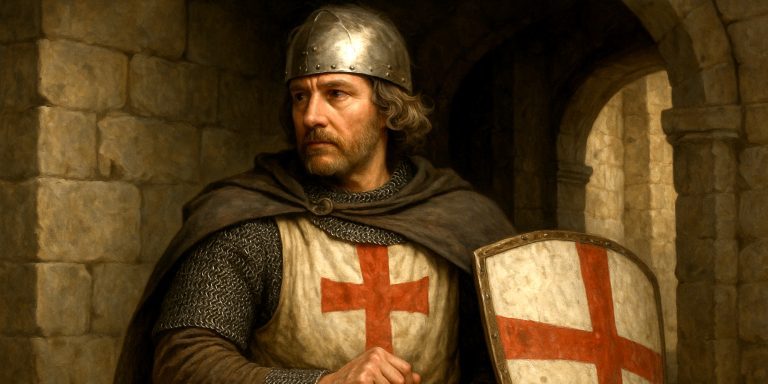
Harald Sigurdsson, better known as Harald Hardrada (c. 1015–1066), stands as one of history’s most formidable Viking warlords. His life was a cocktail of ruthless ambition, battlefield brilliance, and almost mythic swagger. The question is not whether he was impressive, but whether he was the greatest Viking leader of them all. To answer that, we need to march through his campaigns, weigh his legacy, and listen to the voices of those who saw him in action.
Military Career
Battle of Stiklestad (1030)
At just 15, Harald fought beside his half-brother Olaf II of Norway against rebellious nobles. Olaf was cut down and Harald was forced into exile. That defeat would send him on a mercenary’s path across Europe.
Byzantine Service (1034–1043)
Harald became a commander in the elite Varangian Guard, carving out a reputation that followed him home:
- Siege of Messina (1038): A night attack secured the Sicilian city.
- Bulgarian Campaigns (1041): He crushed revolts so fiercely he earned the charming title Burner of Bulgaria.
- Anatolian Expeditions: Held back the Seljuk Turks with the discipline of a professional army.
King of Norway (1046–1066)
Returning home, Harald launched a bitter struggle for the throne:
- Civil War: Battled his nephew Magnus the Good and Sweyn Estridsen of Denmark.
- Battle of Niså (1062): A naval clash where Harald’s tactics secured his dominance.
The English Crown Attempt (1066)
Never one to think small, Harald set his sights on England. Allied with Tostig Godwinson, he scored a victory at Fulford (20 September 1066). But glory was short-lived. At Stamford Bridge (25 September 1066), Harold Godwinson’s Saxons caught him off guard. It was Harald’s last stand.
Contemporary Voices
Harald’s reputation was not built in hindsight. His contemporaries were just as struck by him:
- Snorri Sturluson (c. 1230): “Harald was physically stronger than any man, with hair like silk and a beard that streamed like ice. He was greedy for power, yet generous to those who served him.”
- Michael Psellos (11th century): “The Norse prince displayed a mind as sharp as his blade, mastering strategies unknown even to our generals.”
- Anglo-Saxon Chronicle: “Here was a king who fought like a wolf, until the arrow found him.”
The nickname Hardrada – “hard ruler”, says it all.
The Death of a Warlord
At Stamford Bridge, Harald is said to have fought without armour, bellowing: “Seven feet of ground, or as much more as I am taller than other men, is all I need!” A Saxon arrow to the throat proved him wrong. His death, along with the destruction of his army, ended the age of Viking invasions in England.
Weapons and Warfare
Harald was not just brawn; he adapted to every battlefield:
- Dane Axe: A long-handled axe, his favoured weapon.
- Ulfberht Sword: High-quality steel, a mark of wealth and rank.
- Spears: Standard for shield wall combat.
- Byzantine Influence: Siege engines, cavalry manoeuvres, and more structured tactics.
Legacy
- The Viking Age Ends: His defeat at Stamford Bridge closed a chapter of history.
- National Hero: Celebrated in Norway as a unifier and memorialised in Oslo.
- Cultural Icon: From novels like The Last Viking to modern television, he endures.
- Military Study: His blending of Viking ferocity with Byzantine professionalism gives military historians plenty to chew over.
Historian Lars Brownworth summed him up best: “He was the last Viking who lived as he died, unbowed, and hungry for glory.”
The Seven Swords Takeaway
So was Harald Hardrada the greatest Viking of them all? Cnut the Great might argue from the grave, having held a wider empire. But Harald’s career, from a teenage exile to mercenary, warlord, and king, captures the Viking spirit in full. He was not just a ruler; he was a storm. And when the arrow struck him down, it marked the last great roar of the Viking age.



